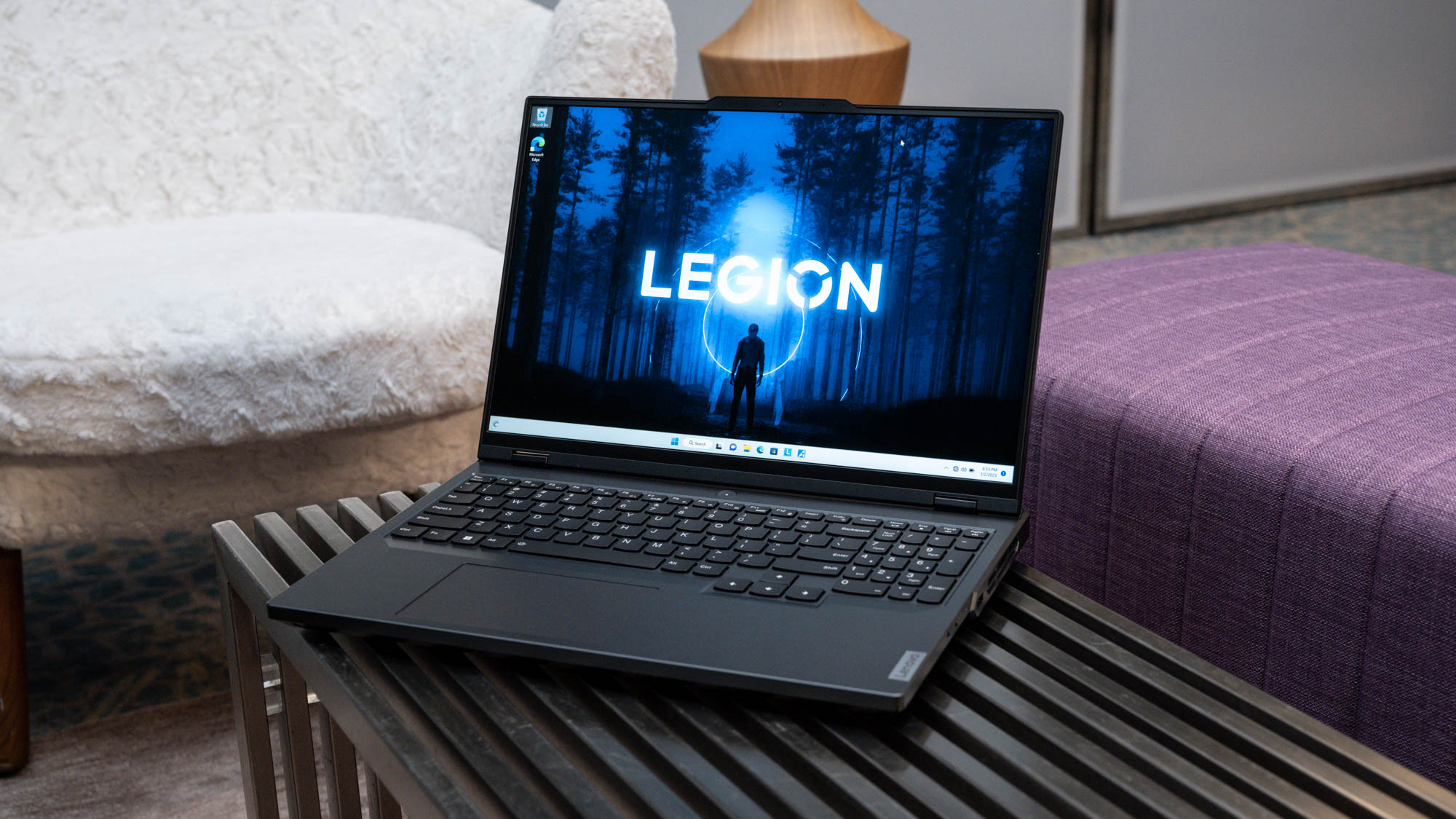Lenovo’s New 16-Inch Legion Laptops Add AI Chip to Tune Gaming Performance
Gigabyte has been boasting about using AI in its Aero laptops (via Microsoft’s Azure cloud service) to smartly boost performance for years now — with negligible results, according to our testing. But Lenovo’s new 16-inch Legion Pro 7(i) and 5(i) gaming laptops claim to be the first with a dedicated “LA AI” chip that uses machine learning to “optimally tune system performance.”
Lenovo says the chip and Lenovo’s Vantage software monitors in-game frame rates to “dynamically adjust for the highest performance output.” The company says this allows for “up to 15% higher TDP” to dissipate heat, and hopefully improve performance. Tobii’s Horizon head tracking is also on board to increase immersion, letting games react to your movements.
We’ll of course need to get these laptops in to test to see how much of a difference the AI chip makes, but the lineup offers lots of component options. All models will sport a 16-inch 16:10 IPS display with 2560 x 1400 resolution and up to 240 Hz refresh rate. And Lenovo says for those times when you aren’t gaming, an FN-R key combo will drop the refresh rate to 60 Hz to conserve battery.
Brightness is rated up to 500 nits, but the more esports-focused (and presumably less-expensive) Pro 5 models will also have an option for a 165 Hz panel that’s rated to a lower (though still decent) 300 nits. As with previous Legion laptops, the Pro 7i and Pro 5i models will sport Intel CPUs (13th Gen, up to the i9 13900HX), while the Pro 7 and Pro 5 bring AMD’s Ryzen 7000 CPUs (up to the Ryzen 9 7945HX).
While Lenovo’s Legion laptops are typically somewhat understated in terms of flashy design, you do get per-key RGB that’s fully customizable using Lenovo’s Legion Spectrum software, but only on the 7 and 7i models. And there is a light bar in the front that matches the glow and patterns of your keys. The Legion Pro 5 and 5i sport optional 4-zone RGB lighting on their keyboards.
The Pro 7 and 7i laptops will start at 6.17 pounds and feature a 99.99 Wh battery, while the Pro 5 and 5i start at 5.51 pounds thanks in part to a smaller 80 Wh battery. But Lenovo says both lines will feature batteries that can charge up to 80% in just 30 minutes, and for slower charging they support up to 140W charging over USB-C (if you bring your own USB-C charger).
Graphics support was listed simply as “Nvidia GeForce Next Gen,” but given these laptops are listed as 0.86-1.05 inches thick and Lenovo’s emphasis on cooling, we’d expect to see models with high-end graphics.
Legion Tower 7i Gets New Parts, Improved Airflow
Lenovo’s refreshed Tower 7i desktop is the same 34-liter size as previous models, but the company has added some much-needed improved airflow in the front, with more ventilation up top as well. The company says configurations sold in North America will feature three fans up front and one at the back.
Lenovo will offer the Tower 7i with 13th Gen i7-13700K(F) or i9-13900K(F) processors and the now-familiar Nvidia GeForce Next Gen graphics. PSU options are listed up to 1200W, so it seems likely that GPU options will range up to an RTX 4090. Interestingly, liquid cooling for the CPU is said to be optional. So hopefully whatever air cooler Lenovo has lined up to tackle those CPUs is large and in charge.
The desktop will ship both SSD and 3.5-inch storage options, and Lenovo says you’ll be able to get up to 6TB of solid-state storage (across three 2TB drives). DDR5 RAM is listed at a decent 5600 MHz and you can pack in as much as 64GB. But the starting option is listed as one 8GB stick. Both because of the limiting capacity and frame-killing aspects of single-channel memory, that single-stick 8GB model is something no one should buy and Lenovo should be embarrassed to sell. Then again, other big-box desktop makers offer similarly hobbled options as well. So Lenovo isn’t alone there.
There is no AMD-based option for the larger 34-liter Tower 7, but a 26-liter Tower 5 will be offered with up to an AMD Ryzen 9 7900 CPU and next-gen Nvidia graphics. It also starts with a single-stick 8GB configuration for those who like to hobble the performance of their otherwise powerful gaming desktop.
As with many things being announced here at CES, there’s no word yet on pricing or availability.
Get Tom's Hardware's best news and in-depth reviews, straight to your inbox.
After a rough start with the Mattel Aquarius as a child, Matt built his first PC in the late 1990s and ventured into mild PC modding in the early 2000s. He’s spent the last 15 years covering emerging technology for Smithsonian, Popular Science, and Consumer Reports, while testing components and PCs for Computer Shopper, PCMag and Digital Trends.
-
-Fran- I've liked the Legion series design since the initial generation. They look* refined at the price point a grown up will pay, so none of that "I wanna look like a transformer" stuff going on, fortunately. Sober designs are so under appreciated nowadays.Reply
Anyway, I'm looking forward to these machines reviews. Between Asus and Lenovo, looks like AMD will have very good notebooks this gen.
Side note: I noticed all AMD laptops with USB-C have been upgraded to support DP1.4 via the cable with revision 2, so that's great.
Regards. -
gggplaya If you follow gamers nexus, you'd know that most OEM tower computers from big names and even smaller name manufacturers have terrible airflow and their CPU's will actually throttle with bone stock settings. This Legion Tower looks like they actually care about cooling. If it didn't build my own, I'd look at one of these over other brands.Reply



